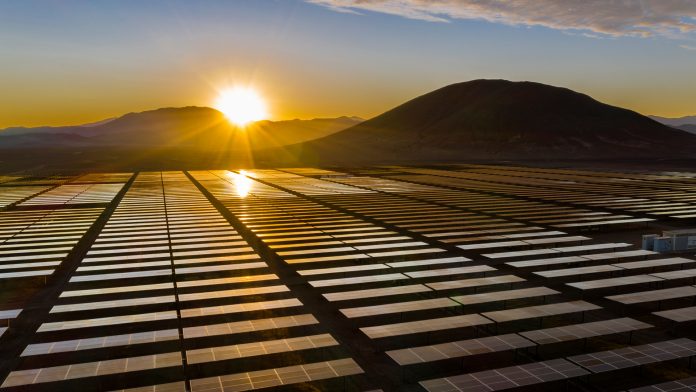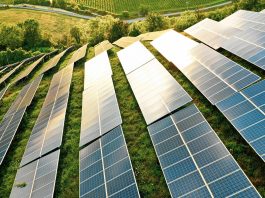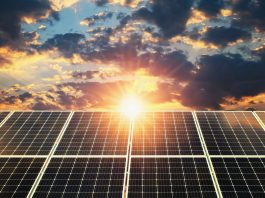A recently developed holographic light collector increases the efficiency of solar panels with an energy conversion increase of around 5% over a year.
Scientists at the University of Arizona have created a pioneering method to capture the unused solar energy that illuminates a solar panel.
The findings, that have been recorded in the Journal of Photonics for Energy (JPE), describe how the team developed unique holograms that can be simply incorporated into the solar panel package.
The total sum of energy available from sunlight is approximately 10,000 times greater than what is necessary to fulfil the world’s energy demand. Sunlight has two core properties that make it beneficial in the construct of renewable energy systems. The first property is the quantity of power falling on a fixed area, which fluctuates with the time of day and the season, and the second is the colours or spectrum of the sunlight.
One way to apprehend solar energy is by utilising solar cells that directly convert sunlight into electricity. In a solar module, such as solar panels placed on a roof, cells are amassed on a rigid panel, linked together, sealed, and then protected with glass.
The solar is most efficient when specific colours of sunlight fall on it, and when the entire area is coated by photocells. However, some panel area is necessary to link the cells, and the solar cell shape might not enable all the remaining panel area to gather sunlight. Subsequently, the solar panels are less optimal than they have the potential be. Obtaining the best possible quantity of sunlight on a solar panel is essential to effectively harnessing solar energy.
Designed by Jianbo Zhao, a PhD student, the holographic light collector is a combination of a low-cost holographic optical element and a diffuser. The optical element is located symmetrically at the centre of the photovoltaic module to capture the optimal light collection.
Every hologram divides the colours of sunlight and guides them to the solar cells within the solar panel. This technique is able to improve the quantity of solar energy converted by the solar panel by approximately 5% over the course of a year. This has the potential to decrease both the cost and the quantity of solar panels required to power a home, a city, or a country.
This novel investigation was supported by the QESST Engineering Research Center, which is sponsored by the US National Science Foundation and US Department of Energy, in order to tackle the question of rebuilding electricity generation to sustainably meet greater energy demands.
JPE Editor-in-Chief Sean Shaheen at University of Colorado Boulder commented: “The enhancement of approximately 5% in annual yield of solar energy enabled by this technique could have large impact when scaled to even a small fraction of the hundreds of gigawatts of photovoltaics being installed globally. Professor Kostuk’s team has demonstrated their holographic approach with a low-cost material based on gelatine, which is readily manufactured in large quantity. And while gelatine is normally derived from animal collagen, progress in lab-derived versions has made it likely that synthetic alternatives could be used at scale.”
The researchers are optimistic with their findings and are looking towards conducting additional research to further enhance the energy yield of holographic light collectors through experimental assessment of materials.









